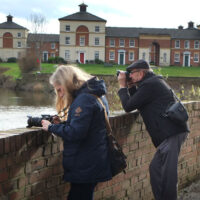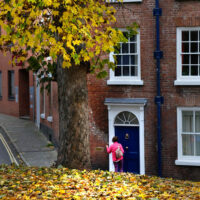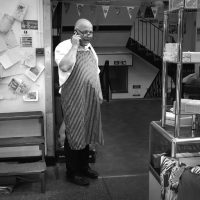Hand-held flash – get the balance right with available light
I was taking about hand-held flash in my previous post. A long-time student of mine, Irene Dunton, commented that on her recent trip to Venice she had tried the technique of using a time exposure with flash.
Her results proved a little disappointing, so she asked me what went wrong.
20 second exposure and flash
Irene wrote: “I had a bash at this technique just last week in Venice. I did a long exposure of San Georgio Maggiore (20 secs) and towards the end fired my flashgun at the gondolas moored in front of me. It worked slightly – next time I go to Venice I’ll have a few more tries!”
Here is Irene’s picture, and as you can see, it’s almost there – a great try, but just a bit too dark and lacking light in the foreground.
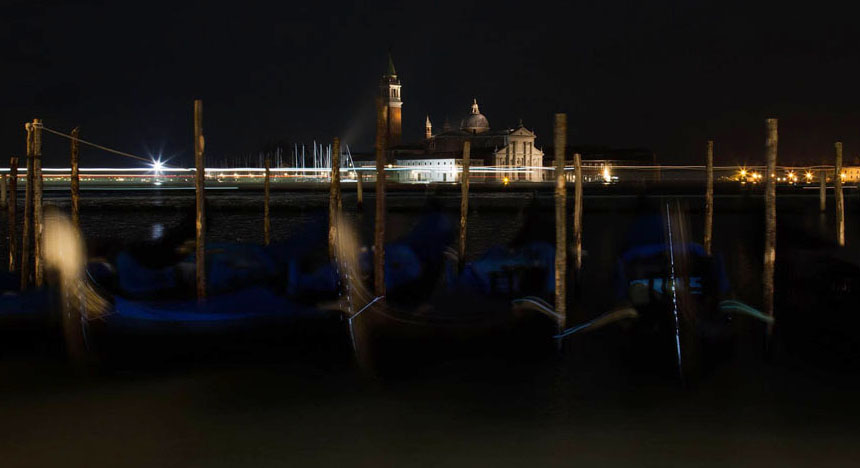
I asked Irene how many times she fired the flash, where she pointed it, what ISO did she use and what aperture did she set on the camera.
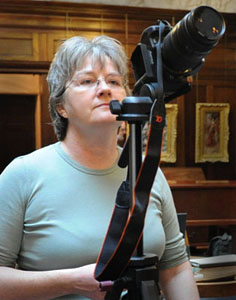
Flash fired once
Irene replied: “It was a hand-held flash and I just flashed it once – and probably pointing too far over to the left, although I like the way it’s caught the prow of the gondola just to the right of centre.
“The metadata has disappeared from this version, but other shots I took earlier that evening are 20 seconds at F16 with ISO 200 so probably the same.”
ISO and aperture
Well, let’s start with that ISO of 200, and the aperture of f16.
Although Irene’s exposure of 20secs has picked out the floodlit buildings in the distance, a lot more light (from the flash) was needed on the foreground.
We don’t need to go into all the technicalities of flash gun guide numbers here. However, much depends on the power of your flash gun. It’s certain that Irene needed a wider aperture – possibly f8 to illuminate that sort of a foreground when using ISO200. If there was a danger of over exposing the background with this wider aperture, the shutter speed might have been reduce to, say, 10 secs.
Remember, the flash fires a about 1/1000 sec, so the length of the shutter speed have no relevance the the exposure of the flash in these circumstances.
The lovely ‘star-burst’ sparkles created by street lights should not be lost at f8. Modern lens optics are wonderful.
Fire your hand-held flash more than once
You may even need to fire your flash more than once. But this should not be a problem with an exposure as long as 20secs. The camera, we assume is on a good, solid tripod, and won’t move while the shutter is open. So while it’s open, there’s plenty of time for the flash gun to recycle after the first flash. You can move to the other side of the camera to fire the flash again if you like.
If need be, you can fire a hand-held flash lots of times. While the shutter is open at night, it is sometimes possible to press the shutter button, then walk around within the shot firing off flashes as you go. Wear dark clothes and keep moving. Chances are you will not even appear in the finished photograph.
There are a few tricks to learn with this photo technique, but it’s great fun. It always causes a riot of laughter when we set it up on one of my Night Photography Workshops.
I’m thinking about arranging another of these Night Photography Workshops in Shrewsbury in the New Year. Please contact me if this appeals to you.
So, I hope all this helps Irene and I certainly look forward to seeing her next pictures taking with time exposure and hand-held flash. Thank you Irene.
ONE-TO-ONE PHOTOGRAPHY TUITION WITH PHILIP DUNN
